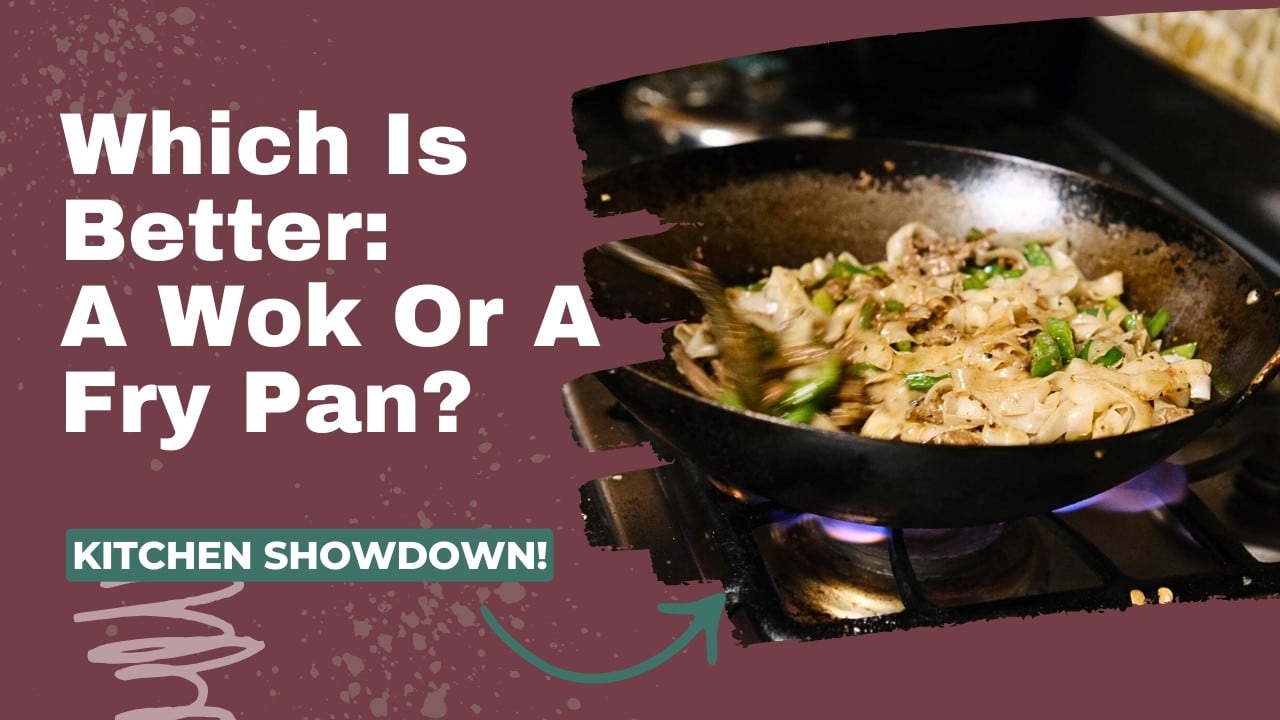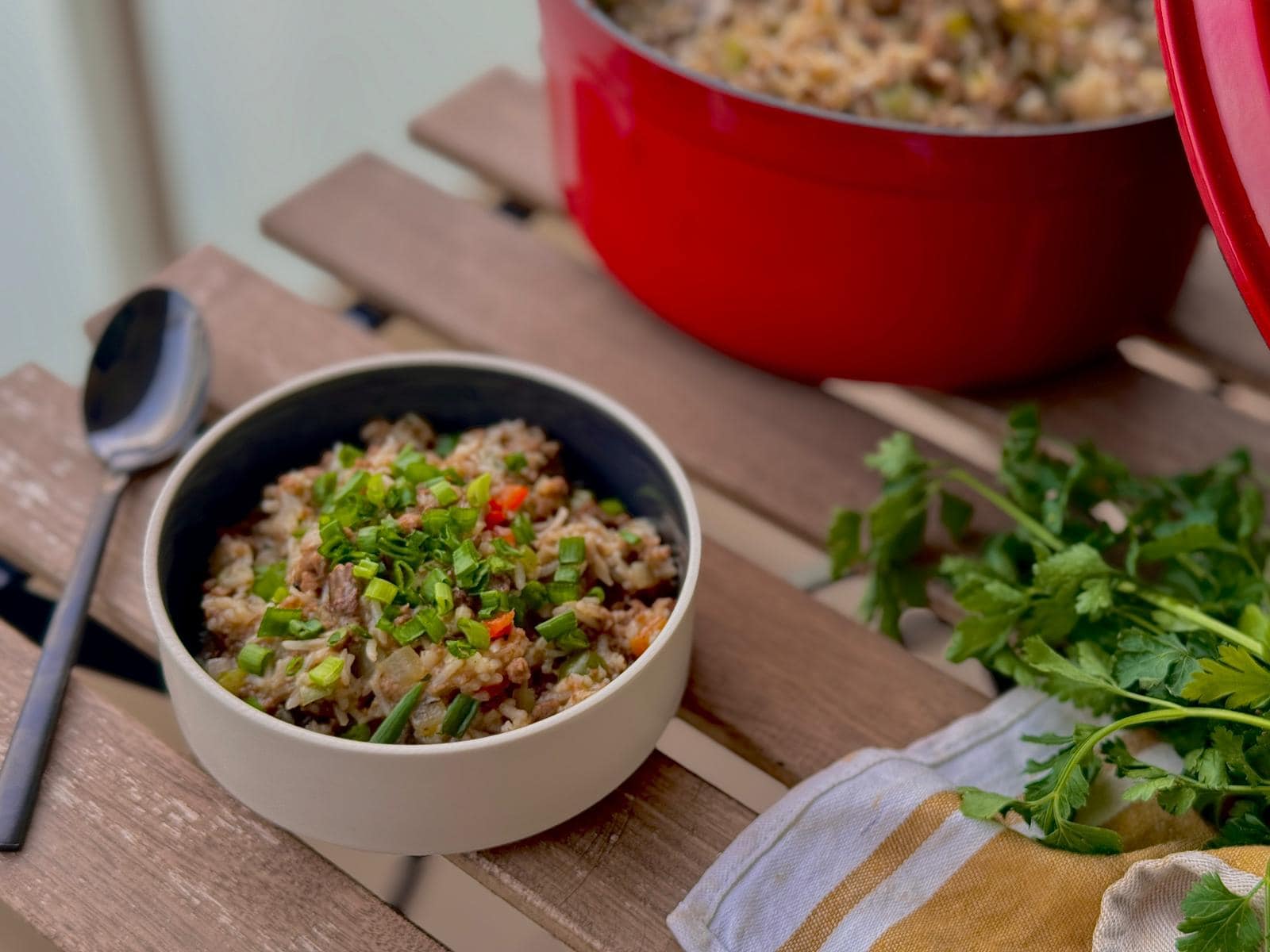So what’s the difference between a frying pan and a wok? Is a wok just an Asian version of a fry pan? Do they cook that differently?
I had no experience with woks until I married my Chinese husband and got to taste the incredible stir-fries, fried rice, and shrimp-and-lobster-sauce that came out of his treasured carbon steel wok.
But I’m also a super practical American who doesn’t want to keep more pans on hand than I actually need.
So let’s talk about the difference between woks and fry pans and whether there’s room in your kitchen for both.
What’s the Difference between a Wok and a Fry Pan?
A frying pan has a wide flat bottom with shallow, gently sloped walls. Oils and sauces spread evenly across the bottom of the pan. A traditional wok has a rounded bottom, allowing liquids to sit in the center. Woks have taller, steeply slanted walls. Woks can typically hold more food. Since the walls act as a cooking surface, woks can achieve more intense heat and allow moisture to evaporate faster.
Which is Better?
A frying pan is better for recipes that don’t need to be constantly stirred. It’s much more effective at searing meat, great for making eggs, and is fine for soft-cooking vegetables. A wok is better for flash frying, stir-frying, deep frying, or cooking large amounts of food.
Wok vs Frying Pan: The Pros and Cons
| Wok | Frying Pan | |
|---|---|---|
| Diameter | 12-16” | 8-14” |
| Material | Carbon steel or aluminum | Varies widely |
| Shape | Rounded or flat bottom with high sloping walls | Flat broad base with ~2” gently sloped walls |
| Oven safe? | No | Sometimes |
| Pros | ✅ Holds lots of ingredients ✅ Cooks quickly ✅ Needs less oil | ✅ Oven-safe ✅ Lots of material choices ✅ Great for large cuts of meat |
| Cons | ❌ Needs to be seasoned ❌ Takes practice ❌ Not good for steak ❌ Harder to clean | ❌ Cooks more slowly ❌ Holds less ingredients ❌ Steams food |
Fry Pan Materials and Construction
Frying pans can be made from pretty much any kind of cookware material – from ceramic, to cast iron, to stainless steel, to nonstick aluminum. Some are dishwasher safe; others need extra care or seasoning. Many frying pans are oven-safe, making them good one-pot-meal pans.
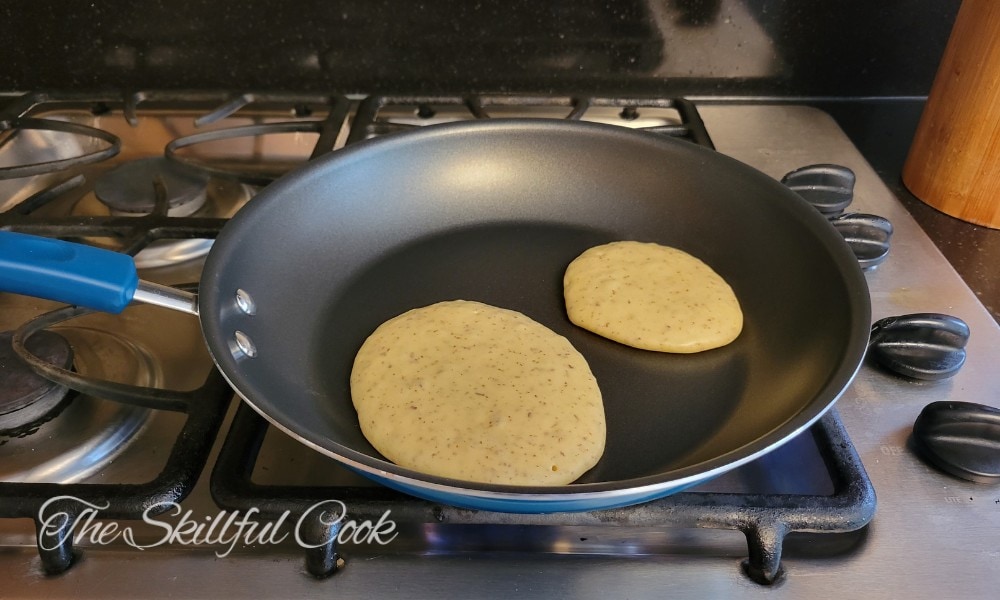
Fry pans range from 8” in diameter to 14” in diameter. They weigh anywhere from 2 to 6 pounds. Fry pans can be used on all kinds of stovetops, even induction cooktops if the material is induction-compatible.
Fry pans are usually measured rim-to-rim, so their actual capacities vary based on the height of the walls and the width of the cooking surface. But due to their shallow walls, fry pans don’t hold more than 2-3 quarts at the most.
Wok Materials and Construction
Woks are traditionally made of 2mm carbon steel, and often have wood handles. But you’ll also find aluminum versions these days, coated in nonstick ceramic or PTFE. Woks must be made of a lightweight material because they are so large. Serious chefs love to flip food in their woks, so they can’t be too heavy!
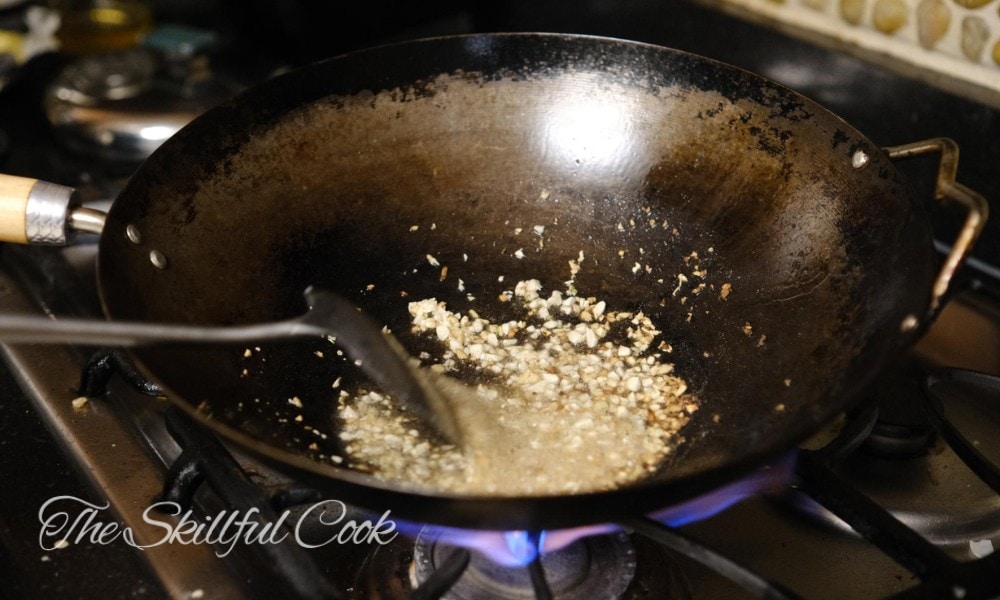
Woks may have a rounded or flat bottom. They can only show off their true power if used on a gas stove – but they can be used on other cooking surfaces as well. If you want to use a rounded-bottom wok on an electric stove, you may need to use a wok ring.
Woks are typically measured rim-to-rim as well. 14” is the most commonly recommended size for home use, but restaurant woks can be much larger. A 14” wok has about a 5-quart capacity.
Can you Substitute a Frying Pan for a Wok?
My husband may disagree, but I’ll say it: you can stir fry in a frying pan. And you can saute vegetables in a wok. So there are many times a wok can be substituted for a frying pan, and vice versa.
But there are definitely recipes that are better suited to one or the other. For a great example, watch renowned chef Grace Young make beef and broccoli effortlessly on her wok in the video below. In contrast, the other cook struggled to get the right texture on the recipe in her fry pan.
Do You Need a Wok?
Woks are absolutely a necessity if you want to make genuine Asian recipes like fried noodles or Sichuan eggplant.
But there’s a catch – woks only work properly if they’re used with high heat.
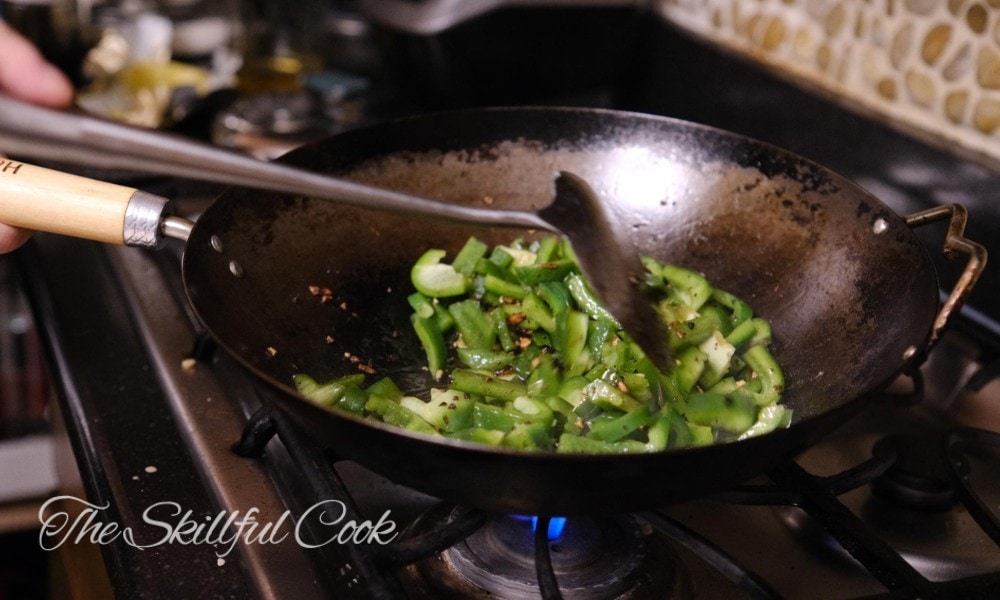
As Ms. Young referred to in the video above, most American stoves don’t get hot enough to allow the wok to cook effectively. When the wok is hot enough, the sides of the pan cook food almost instantly and without steaming it. But when the wok is not hot enough – or when the pieces of food are cut too large – moisture will release from the food as it cooks and not evaporate quickly enough, turning a stir-fry into a soggy mess.
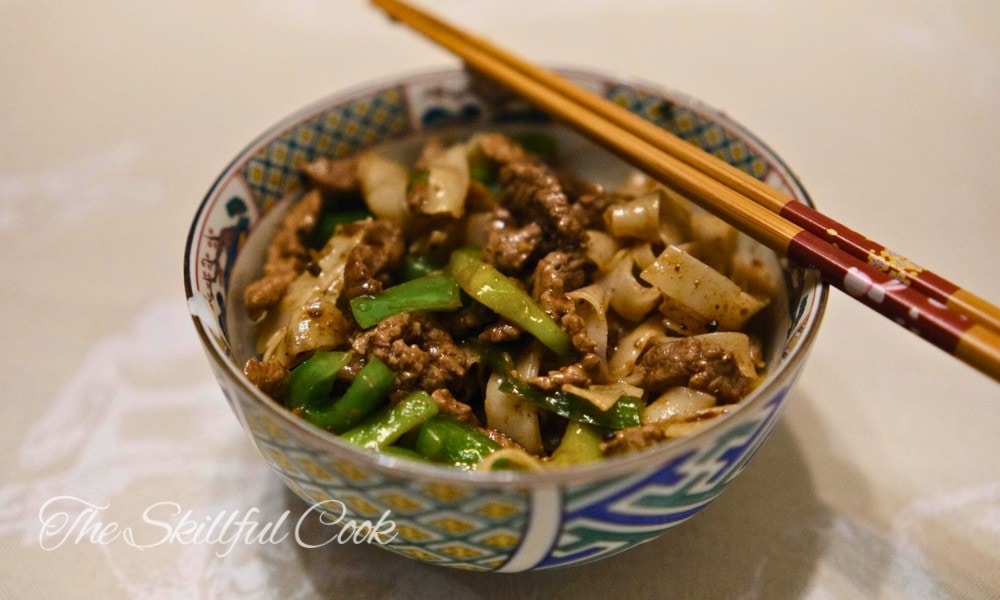
If you have a stove that can heat your wok effectively and you are willing to learn the right cooking techniques, then a wok is worth the purchase.
But if you only want to saute vegetables, or make a once-in-a-while American “stir fry” of frozen veggies doused with La Choy (like I grew up on!)– then go ahead and just use a fry pan.
Is Cooking With A Wok Better?
In some ways, a wok is more versatile, since you can boil water or deep fry in it. If your wok has a lid, you can steam seafood and vegetables.
Woks are better for fried rice or anything that needs to be cooked quickly and tossed or stirred frequently.
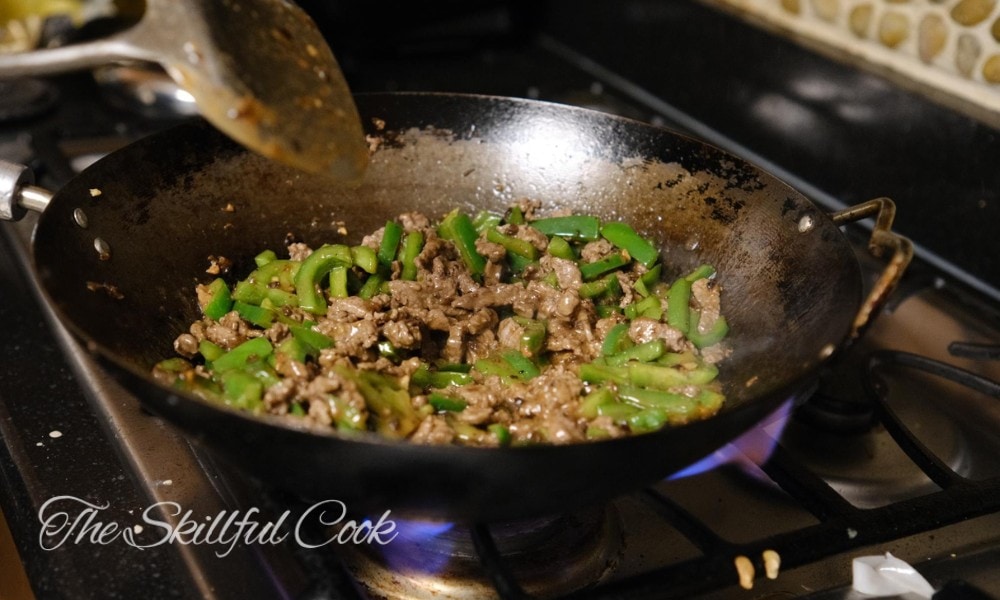
However, a wok can’t sear a large cut of meat. You should also avoid cooking acidic foods in your wok, as it can strip your seasoning. If your wok is not flat-bottomed, it may not cook effectively on an electric stove.
Woks are also heavier than fry pans, and harder to clean and handle.
If you want a recipe for testing out a wok vs a fry pan, try making this Cashew Chicken Stir Fry with Cauliflower Rice.
Frequently Asked Questions
What are woks made of?
Most often, woks are made of carbon steel or cast iron. You can find aluminum woks, but they are more prone to warping. They are also usually coated in nonstick ceramic or PTFE, which can’t hold up to high heat or to aggressive stirring.
What type of stove can I use a wok on?
Gas stoves are ideal for cooking with a wok. However, you can cook on an induction stove or an electric stove if you have a flat-bottomed wok or use a wok ring. Carbon steel woks will work on induction cooktops – but you should watch out for warping. Aluminum woks are less likely to be induction-compatible.
How do I season a wok?
Many woks have wooden handles, so they can’t be seasoned in the oven. You can season your wok on the stovetop the same way you season other carbon steel pans. Heat your wok on low heat and add a teaspoon of high smoke point oil. Spread the oil around evenly, letting it heat for 1 minute. Turn off the heat and use a paper towel and spatula to wipe down the wok. Do not season nonstick-coated woks!
Do woks come pre-seasoned?
Your carbon steel or cast iron wok may come with a layer of oil on it. This is just to prevent rusting before the first use. Wash your carbon steel wok thoroughly and then season it before you use it.
What type of oil should I use to cook in my wok?
Woks get very hot! Use an oil with a high smoke point, like grapeseed oil, avocado oil, or peanut oil.
Can I use a frying pan instead of a wok?
A frying pan is a good substitute for certain recipes if you don’t have a wok. Be careful not to overload the pan, as rice or meat will steam instead of fry if crowded. Keep your stove at medium unless your fry pan can handle high temperatures. If you need a high-temperature-safe fry pan, use uncoated stainless steel, carbon steel, or cast iron.
Conclusion
A wok is a fantastic piece of cookware to add to your kitchen. It heats quickly, cooks evenly, and allows you to cook in many different ways! However, it can’t do everything. If you don’t want to deal with seasoning a wok or don’t have room for another piece of equipment, a frying pan is a good substitute.
Have any questions about a wok vs. fry pan? Which do you use most often? Let us know in the comments!

